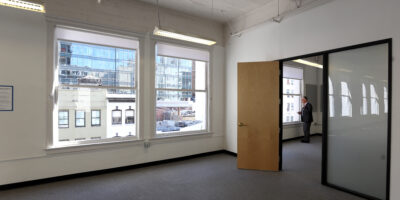
Bad day at the office? In high-pressured Singapore, a “rage room” lets stressed-out people take a baseball bat to items ranging from glass bottles to televisions. (Photo by ROSLAN RAHMAN / AFP)
‘Quiet quitting’ a tradeoff between productivity & work-life balance?
More workers are unhappy at work, despite the new levels of workplace freedoms that digital technologies and global circumstances have afforded them. Earlier in the year, people were leaving their jobs in droves, then companies were cutting workforce strengths, and now the international trend is towards ‘quiet quitting’.
Quiet quitting emerged as a hot-button talking point on TikTok in mid-2022, and very quickly resonated with young people who have become accustomed to a demanding working culture in a prolonged period of economic uncertainty and a global pandemic.
Even in Asian economic hotspots like Singapore and Hong Kong, long used to a culture of overwork such as working longer hours and doing extra tasks without expectation of overtime or extra compensation, expectations of remote working and more flexible working hours are increasingly in-demand especially amongst the younger working set – failing which, employees are more likely to consider quiet quitting.
Many workers are still planning to resign for greater job satisfaction and better compensation over the next year, but quiet quitting actually involves employees staying with their firm – but doing the bare minimum expected at work, as opposed to trying to please the management by doing as much as possible.
The Exhausted by Work – The Employer Opportunity report by Cigna International pointed out that while hybrid and flexible work is highly sought after by younger workers, a worrying 97% of 18-34-year-olds surveyed in countries like Australia, Mainland China, Hong Kong, India, Japan, and Singapore report being burned out.
Over 70% of both 25–34-year-old Millennials (73%) and 18–24-year-old Gen Zs (71%) are spending more time reconsidering their life priorities and nearly half (48%) are looking for new jobs despite the fragile economic climate. This demonstrates how overwhelmed the younger working generations are now, and for those who resigning is not an immediate option, quiet quitting is fast catching fire as an alternative.
Managers in fast-moving working cultures like Singapore’s, in fact, are lamenting this change in employee mindset. “But quiet quitting is not about avoiding work, it is about not avoiding a meaningful life outside of work,” according to Nilufar Ahmed, senior lecturer in Social Sciences at the University of Bristol.
For Singaporean workers, Indeed Singapore’s survey research found that while nearly half (45%) of workers on the island-state report financial compensation as the main reason they want to ‘quiet quit’, Gen Zs were the age group least interested in money as the reason. Exactly half say salary is the most critical reason, compared to 61% of Millennials and 70% of Gen Xers.
“Our survey identifies how workers in Singapore want to limit the pressure from work in their lives,” said Nishita Lalvani, Marketing Director for Indeed in India and Southeast Asia. “But it is important to note that they are not saying they don’t want to work hard. They are just stressing the limits and the desire to have a better life-work balance.”
“Quiet quitting aims to restore balance where work has crept into your personal time”, wrote Ahmed, and can help to separate an individual’s self-worth from their work identity. In work-first work environments like Singapore’s, this can include distancing perceived work failures – like not getting recognition for work achievements or not getting a deserved raise or promotion – from being internalised as personal failures, causing performance anxieties, and leading to a damaging cycle of low self-esteem and working even harder to compensate – inevitably, leading to burnout.
“Burnout is difficult and costly for individuals and employers. Many people with burnout end up taking time off work, or at least working at less than full capacity,” explained the University of Bristol’s Ahmed. “Quiet quitting can create a better balance of work and personal life and so could protect against burnout before it happens.”
Flexible work and digital-led innovations have stretched out worker resilience in post-pandemic Singapore, but many companies are still not offering flexible work arrangements as a long-term fixture. Only slightly more than half (52%) of Singaporeans surveyed by HR specialist Randstad claimed that their employers provided remote working options.
But the same survey found that around two in five Singapore workers will no longer accept jobs that do not offer work-from-home or flexible work-hour arrangements. This is indicative of a shifting mindset in traditionally employer-friendly Singapore, where trends like quiet quitting have made employees more conscious of being happier in their jobs, seeking fulfilment as much as (if not more) than seeking higher salaries and recognition.
52% in the Randstad study say they would resign from their jobs if it restricted their outside-of-work lifestyles, a sea change in Singaporean employee thinking, particularly among the Gen Zs and Millennials (more than half would leave their present positions if it did not allow them to enjoy life, at 56% and 57%, respectively).
Perhaps most tellingly in this ‘new normal’, 41% of Singaporean respondents would rather be unemployed than unfulfilled in their employment. This is well above the global average of 33%, as per Randstad, and a whopping 94% of respondents say that work-life balance is as critical as ever.
While employees, especially the younger generations, are in agreement with the importance of work-life balance, will these flexibility demands impair productivity? As studies have shown time and time again, the vast majority actually report productivity increases after implementing work-life balance programs along with flexible jobs and workdays.
READ MORE
- Strategies for Democratizing GenAI
- The criticality of endpoint management in cybersecurity and operations
- Ethical AI: The renewed importance of safeguarding data and customer privacy in Generative AI applications
- How Japan balances AI-driven opportunities with cybersecurity needs
- Deploying SASE: Benchmarking your approach


